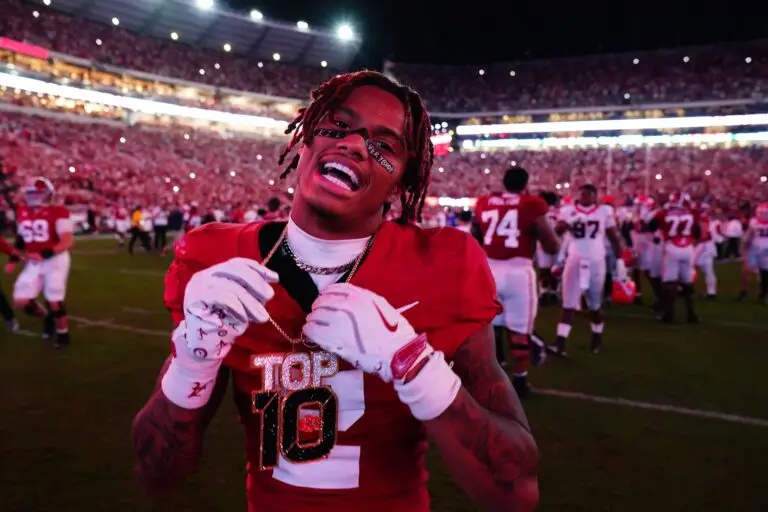In the world of college football, players are often in the spotlight for their athletic performances, but sometimes it’s the off-field choices that garner attention.
Recently, a wide receiver from the Alabama Crimson Tide found himself at the center of controversy, not for his on-field exploits, but for sporting orange-colored nails, which sparked criticism from fans and commentators alike.
The player, whose identity has been discussed widely in social media circles, painted his nails in a bright orange hue, a bold choice that many saw as a direct affront to traditional rivalries, particularly the heated matchups with teams like Tennessee, known for their distinct orange colors.
The outcry was swift, with some fans expressing their disdain for what they perceived as disrespect to the team’s history and its passionate supporters.
Social media platforms exploded with mixed reactions. While some fans lauded the player for expressing his individuality and confidence, others felt that it was inappropriate for a representative of a storied program like Alabama.
Critics argued that players should maintain a level of decorum, especially given the rich history and expectations surrounding the Crimson Tide.
For many, the colors associated with rival schools carry deep emotional weight, and flaunting such colors—albeit in the form of nail polish—was seen as a breach of tradition.
This incident highlights a broader conversation about self-expression in college sports. As athletes increasingly use platforms like Instagram and TikTok to showcase their personalities, the line between personal expression and team loyalty can blur.
Many believe that a player’s appearance should be their own choice, while others argue that adherence to team culture and traditions is paramount.
The debate also raises questions about the evolving nature of sports culture, particularly in college athletics, where players are often regarded as role models.
The tension between personal freedom and team representation is palpable, and as athletes continue to embrace their unique identities, this kind of scrutiny is likely to persist.
In response to the backlash, the player has not publicly commented on the situation, choosing instead to focus on his performance on the field.
As the Crimson Tide prepares for their upcoming games, fans hope that the focus will return to the team’s pursuit of victory rather than the color of a player’s nails.
As college football continues to evolve, it will be interesting to see how players navigate the complexities of self-expression while representing their teams and the traditions they embody.
The orange nails may fade, but the discussions around individuality and team loyalty will likely remain at the forefront of college sports culture.








